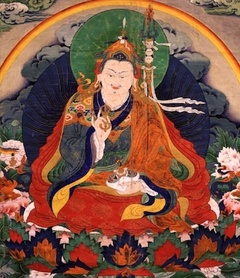Guru Rinpoche Prayers
English (103) | Deutsch (13) | Español (21) | Français (38) | Português (1) | Italiano (1) | Nederlands (1) | 中文 (10) | བོད་ཡིག (103)
Prayers to the Precious Guru Padmasambhava or Padmākara (padma 'byung gnas), the "Lotus-Born", who is credited with establishing Buddhism in Tibet:
Alak Zenkar Pema Ngödrup Rolwe Dorje
Chokgyur Dechen Lingpa
Dilgo Khyentse Rinpoche
Do Khyentse
Dodrupchen Jigme Tenpe Nyima
Dodrupchen Jigme Trinle Özer
Dudjom Lingpa
Dudjom Rinpoche
Dzongter Kunzang Nyima
Fifth Dalai Lama
Fourteenth Dalai Lama
Garwang Chökyi Gyaltsen
Gönpo Tseten Rinpoche
Jamgön Amnye Zhab
Jamgön Kongtrul
Jamyang Khyentse Chökyi Lodrö
Jamyang Khyentse Wangpo
Khenchen Ngawang Palzang
Longchen Rabjam
by Longchen Rabjam and Jigme Lingpa
Mandāravā
Menlungpa Mikyö Dorje
attributed to Menlungpa Mikyö Dorje
